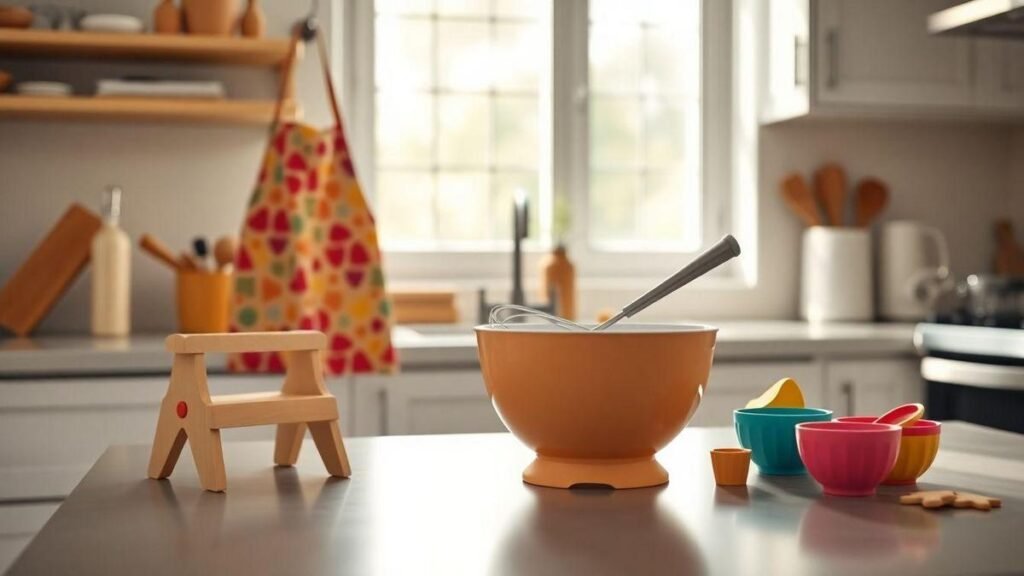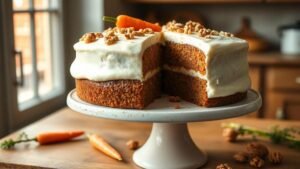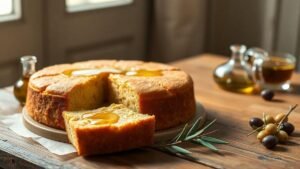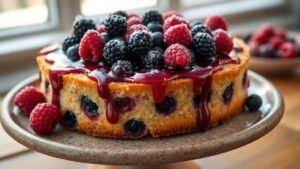I love baking with kids. I wrote this to make it safe, simple, and fun. Below I share a kid-safe vanilla yogurt cake you can mix by hand, age-appropriate tasks, clear safety tips, easy decorations, and ways to turn baking into learning and lasting memories. I keep things calm, friendly, and mess-friendly so the kitchen stays happy and the kids stay proud.
- Bake with kids for bonding, learning, and fun
- Use simple, safe recipes like a hand-mixed yogurt vanilla cake
- Give age-appropriate tasks and close supervision for small children
- Choose mess-friendly tools and kid-safe decorations
- Make baking a lesson in measuring, patience, and creativity
How to Make a Cake That’s Safe for Kids to Help With — Fun, Easy, and Mess-Friendly
Baking with kids is like a small, noisy lab where sugar is magic and flour is snow. Keep the experience low-stress: short steps, clear rules, and prepared stations. Below are a simple plan, the recipe, and the best tips for safe, successful baking with little helpers. If you need allergy-friendly options for school or parties, consider strategies from a guide on nut-free cakes.
Quick Plan
| Quick Plan | Why it matters |
|---|---|
| Pick a simple recipe | Kids do best with short steps |
| Set up a safe station | Keep sharp tools away |
| Give age-appropriate tasks | Keeps kids busy and confident |
| Celebrate the mess | Mess = learning and memories |
What Makes a Cake Kid-Friendly?
A kid-friendly cake uses safe ingredients, short steps, and decorations that don’t require fine motor skills.
| Feature | How I check it |
|---|---|
| Simple steps | 4–6 steps max |
| No raw-egg risks | Use recipes with baked eggs or try egg-free substitutes (see ideas for making a moist cake without eggs) |
| Soft texture | Easy to eat and easy to frost |
| Easy to decorate | Big sprinkles, fruit, or pre-made toppers |
Best Age-Appropriate Baking Tasks
Divide jobs so kids feel proud, not overwhelmed.
| Age | Tasks I give | Supervision |
|---|---|---|
| 2–4 | Pour pre-measured flour, press cookie cutters, stir slowly | Close — stand right there |
| 5–7 | Crack an egg (with help), measure dry ingredients, spread frosting | Near — help with tricky parts |
| 8 | Read the recipe, use the oven with permission, mix batter by hand | Guided — let them try under watch |
Kid-Safe Vanilla Yogurt Cake Recipe
My go-to: soft, mild, and easy to mix by hand. No electric mixer required — for more no-mixer methods you can try a fork-and-bowl technique or simple one-bowl recipes.
Ingredients
| Ingredient | Amount | Note |
|---|---|---|
| All-purpose flour | 2 cups | Spoon into cup, level off |
| Baking powder | 2 tsp | Makes it fluffy |
| Salt | 1/4 tsp | Just a pinch |
| Plain yogurt | 1 cup | Adds moistness |
| Sugar | 1 cup | Can drop to 3/4 cup |
| Eggs | 2 | Room temp is best |
| Vegetable oil | 1/2 cup | Or melted butter |
| Vanilla extract | 1 tsp | For mild flavor |
| Optional: mashed banana or applesauce | 1/2 cup | Swap for some oil to reduce fat |
Instructions
- Preheat oven to 350°F (175°C). Grease a 9-inch pan.
- Whisk flour, baking powder, and salt in a bowl. Let kids mix gently.
- In another bowl, whisk yogurt, sugar, eggs, oil, and vanilla. Kids can stir.
- Fold wet into dry until just mixed — big lumps are okay.
- Pour into pan and smooth top with a spatula.
- Bake 30–35 minutes. Test with a toothpick.
- Cool, then let kids add simple decorations.
Tip: Tell kids the spatula is a magic wand — it keeps the mood light and hands involved.
Safe & Fun Decorations for Kids
Decorating is where play meets cake. Pick items that are big, colorful, and safe to eat. For ideas that don’t need piping skills, check out easy ways to decorate without piping bags.
| Decoration | Why I like it | Safety tip |
|---|---|---|
| Large sprinkles / jimmies | Easy to grab | Keep choking risk in mind for toddlers |
| Sliced fruit | Bright and healthy | Cut soft fruit into thin slices |
| Mini cookies or cereal | Fun shapes | Supervise small kids |
| Edible markers on fondant | Creative drawing | Let older kids draw, not toddlers |
| Whipped cream | Soft and forgiving | Use chilled whip and keep cold |
I let kids experiment — once my son built a rainforest with blueberries and mint. It looked wild and tasted great.
Tips for a Fun & Safe Baking Session
Plan, stay calm, and treat kids as partners. Keep rules simple and consistent.
| Tip | How I do it |
|---|---|
| Prep ahead | Measure ingredients into bowls — kids call them stations |
| Set clear rules | No touching hot pans; wash hands before starting |
| Dress for mess | Old shirts, aprons, and a towel nearby |
| Use child-safe tools | Plastic knives, non-slip bowls, mixing spoons |
| Work in shifts | Rotate tasks so everyone stays involved |
| Praise effort | Celebrate small wins loudly |
I also use a timer — three minutes is short enough to hold attention.
How to Turn It into a Learning Experience
Baking naturally teaches math, reading, and science — plus art and life skills.
| Skill | Activity | What kids learn |
|---|---|---|
| Math | Measure cups and count spoons | Fractions and counting |
| Reading | Read steps aloud | Vocabulary and sequencing |
| Science | Watch batter rise in the oven | Cause and effect |
| Art | Plan decorations | Color, design, creativity |
| Life skills | Clean-up and storage | Responsibility and care |
Ask small questions like What happens if we add more baking powder? — their guesses are fun and often insightful.
Cake Ideas Perfect for Kids to Help With
| Cake Idea | Why it’s good for kids |
|---|---|
| Sheet cake | Big canvas for decoration; fast baking |
| Cupcakes | One-per-child decorating; easy to eat — for tips on keeping them moist, see how to make cupcakes that stay soft |
| Bundt cake | Big shape; simple glazing |
| Mini loaf cakes | Small tasks; less waste |
| Poke cake | Kids poke holes and pour filling — instant win |
My daughter loves cupcakes because each one is a tiny project she can own.
Storage
| Where | How long | Tip |
|---|---|---|
| Room temp | 1–2 days | Keep covered to stay moist |
| Refrigerator | 4–5 days | Wrap with plastic or use a lid |
| Freezer | 2–3 months | Freeze unfrosted or double-wrap |
I slice and freeze extras. Toast a frozen slice in a low oven to refresh it; if a cake ever feels dry, there are easy fixes in troubleshooting tips.
Leave a Comment / Cancel Reply
Your email won’t be published. Required fields are marked.
| Field | Instruction |
|---|---|
| Comment | Write your thoughts here |
| Name | Your name |
| I won’t publish this | |
| Site | Optional |
| Save my info | Check to save info for next time |
I read every comment and reply like a neighbor with cookie crumbs on my shirt.
Last Posts
I update this list when a new kitchen mess turns into a learning story.
Conclusion
Baking with kids can feel messy and a little scary, but it can also be safe, simple, and downright fun. Use the hand-mixed vanilla yogurt cake, follow the safety tips, and assign age-appropriate tasks so you always know what to do next.
Prep stations, use kid-safe tools, and let the spatula be a magic wand. Stand close for the littlest ones and step back for older kids. Celebrate crumbs and praise effort — those tiny wins become big memories.
Baking is a soft, noisy classroom where you fold in math, reading, and science without losing joy. Start small, stay calm, and expect a little chaos — it’s part of the recipe. For more tips and recipes, visit https://xendrie.com.
Frequently Asked Questions
- How do I keep baking safe for kids?
Always supervise. Use kid-safe tools and avoid sharp knives. Adults handle ovens and hot pans. For ages 2–4, stay very close.
- What tasks can kids do by age?
Ages 2–4: stir, dump pre-measured ingredients, press sprinkles (with close help). Ages 5–7: measure, pour, crack eggs with practice. Ages 8: mix by hand and help with the oven under adult watch.
- What is a kid-safe cake to try?
A vanilla yogurt cake — mixes by hand, needs no electric mixer, and is forgiving.
- How do I make decorations safe and fun?
Use sprinkles, sliced fruit, and soft icing. Avoid tiny hard candies for toddlers. Let kids use plastic cutters and piping bags with help.
- How can baking teach kids?
It teaches measuring, following steps, patience, creativity, and builds confidence while making sweet memories.






